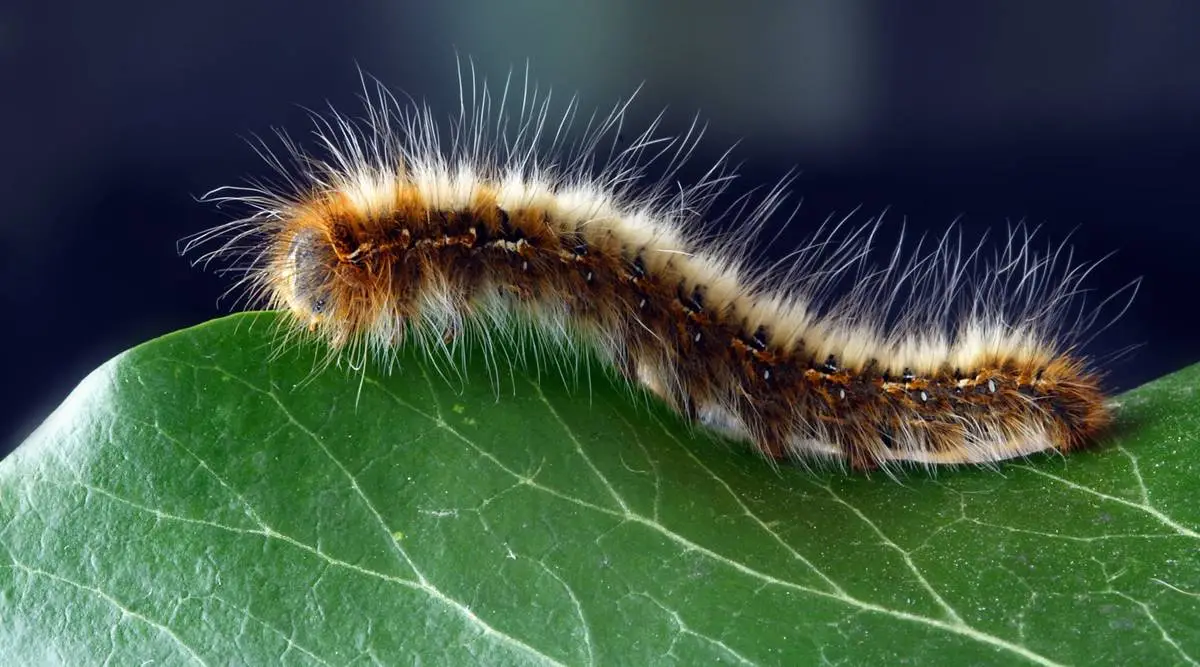Should you hurt moth caterpillars? That’s a question some people ask. Moth caterpillars are those little worm-like creatures you see munching on leaves.
But is it a good idea to harm them? We’ll talk about it. Moth caterpillars may look strange, but they’re just baby moths.
They eat leaves to grow big and strong. Many of us worry that these critters harm their plants.
But on the other hand, some think we should let them be. Caterpillars turn into beautiful moths. Plus, they’re food for other creatures, like birds.
So, now it’s time to get proper knowledge about this question: should you kill a moth caterpillar?
Understanding Moth Caterpillars
1. Identification
Caterpillars are baby moths. There are different types of caterpillars, and they all look a bit different. Most caterpillars are soft and have lots of legs. They really love to eat leaves from plants. Some caterpillars are green, a few are brown, and some have spots.
Each kind of caterpillar is special in its own way. They eat a lot to grow big and strong. Some caterpillars, like yellow Caterpillars, turn into moths when they are all grown up. It’s fascinating to watch them change. An Insect Habitat Kit can be a great tool for observing and raising caterpillars, providing a controlled environment for them to grow and change.
2. Types of Moth Caterpillars
Many different kinds of caterpillars can munch on plants. Some are tent caterpillars, others are gypsy moth caterpillars, and you might find tomato hornworms too.
It’s really important to figure out which type of caterpillar is eating your plants so you can stop them. You can do this by looking closely at them and the plants they’re eating. Once you know which kind they are, you can use the right methods to protect your plants from them.
So, watch for these caterpillars and be a good plant protector. Consider using products like Neem Oil, a natural insecticide that can help deter and kill caterpillars without harming your plants.
To Kill or Not to Kill?
Environmental Considerations
Before doing anything drastic, it’s essential to consider what happens if you remove moth caterpillars. These little bugs are food for other animals in your garden. If you remove them without thinking, it might mess up the balance in your garden.
This balance keeps everything working smoothly. So, instead of getting rid of them right away, you should take a moment to think about the consequences.
If you don’t, you could cause problems for the whole garden. It’s better to be careful and not rush into things when dealing with nature. Garden Gloves can also be a helpful tool to protect your hands while tending to your garden.
Non-Lethal Control Methods
1. Handpicking
If you see only a few caterpillars on your plants, you can pick them off with your hands. This means using your fingers to take the caterpillars away from your plants gently. Be sure to wear gloves on your hands to protect them. You should also check your plants often, maybe every day or every few days, to look for caterpillars. When you see one, take it away. This way, you can keep your plants safe from those little hungry bugs.
2. Natural Predators
Getting birds, ladybugs, and other bugs that eat caterpillars can be good. They eat the caterpillars, so there aren’t too many of them. This helps plants stay safe. Birds fly around and look for caterpillars to eat. Ladybugs are small beetles that like to eat them too. Some other bugs, like spiders, can help, too. They catch caterpillars in their webs. So, having these animals around can help protect plants from caterpillars.
These little creatures keep things in balance. When there are too many caterpillars, they can harm plants. But with these helpers, things stay more in control.
3. Neem Oil
Neem oil comes from the neem tree. It’s a natural bug killer that stops caterpillars from eating and having babies, but it doesn’t hurt helpful bugs. This oil is for your garden because it protects plants from bad bugs. You can spray it on your plants to keep them safe. It’s easy to use and won’t make your plants sick. Neem oil is good for your garden because it keeps it healthy. It’s much better than chemicals that can be bad for the environment.
When to Consider Lethal Measures
If your plants have many bugs and the friendly methods don’t work, you might need to use stronger ways to stop the bugs from hurting your plants forever. It seems when you have a big problem and the small solutions don’t help, you have to do something stronger. But be careful because using strong things can also hurt your plants if you’re not careful.
Plant Health Compromised

If your plants are getting sick because of bugs, you really need to do something about it. It’s important to take quick action to save them. Don’t wait too long, or they might die. You can try things like removing the bugs by hand or using special sprays. Keep an eye on your plants and ensure they get plenty of water and sunlight. Healthy plants make a happy garden.
Conclusion
All in all, it’s important to think carefully about whether to harm a moth caterpillar. Moths are insects that often come out at night and are attracted to light. Caterpillars are baby moths. Some people might want to eliminate them because they eat plants, which can damage gardens.
But before you decide to hurt them, think about nature. They might become beautiful moths one day. Killing them could harm the balance of nature. So, the answer isn’t easy. It’s better to find ways to live with nature instead of causing harm.
Remember that even small caterpillars have a place in our nature.
Be sure to check out these other posts for more fascinating insights:

